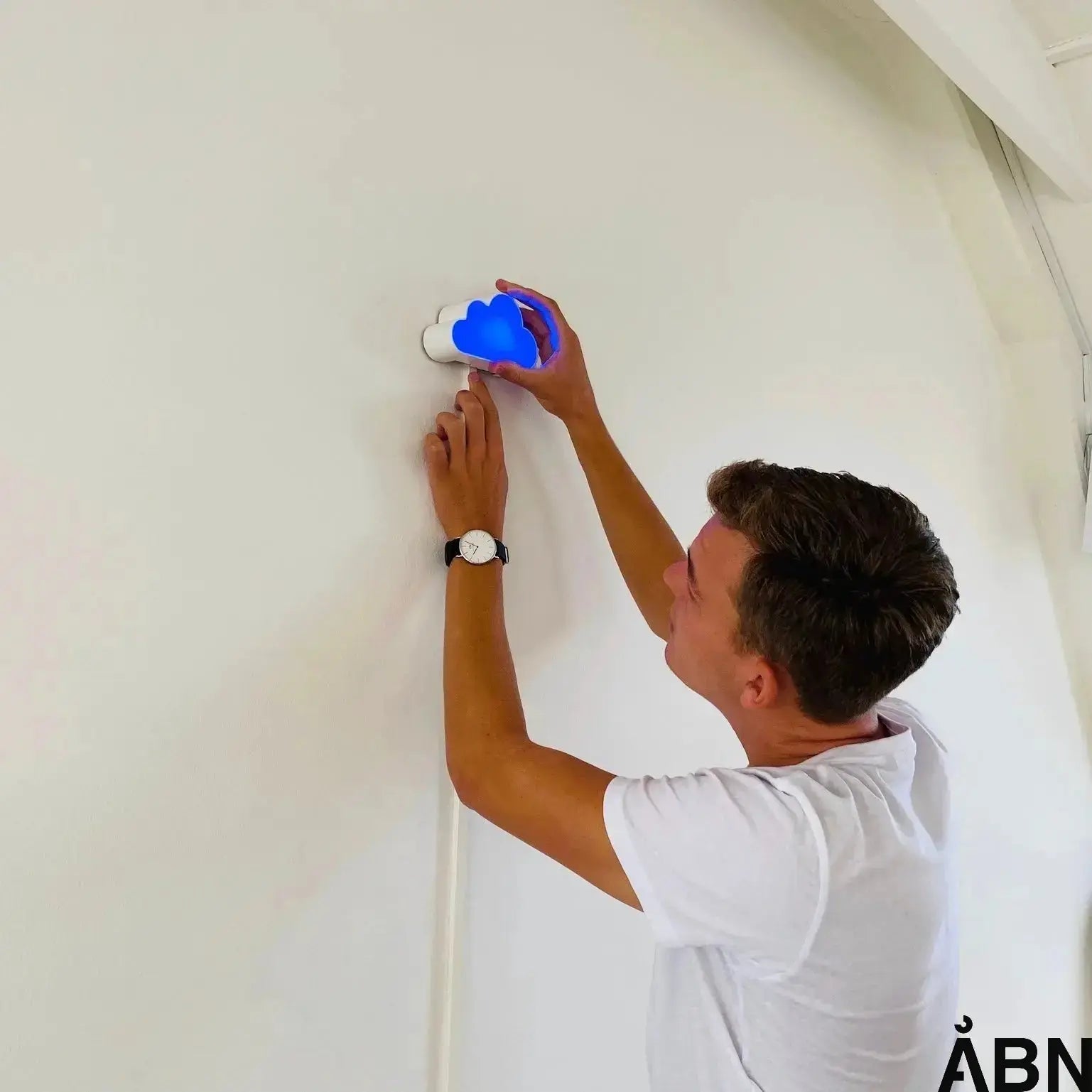This is the optimal indoor humidity
Imagine a classroom where children are coughing and complaining of dry eyes. Or an office where employees are struggling with headaches and difficulty concentrating. It may sound like a small thing, but often it is the indoor climate – and especially humidity – that is the culprit. Humidity is an invisible factor, but its importance to health, comfort and the condition of the building is anything but invisible. That is why it is crucial to understand what optimal indoor humidity really is – and how to achieve it.
What is humidity – and why does it matter?
Humidity describes how much water vapor is in the air. It is typically measured as relative humidity , which is the ratio of the current amount of water vapor in the air to the maximum amount the air can hold at a given temperature and pressure. When the air is 100% saturated, condensation forms – and this is where problems like mold and dampness in the walls arise.
But the problems start long before 100%. Even when humidity is too high or too low, we humans can feel the discomfort – and buildings start to suffer damage. That's why it's important to find and maintain the right level.
What is the optimal humidity indoors?
According to Bolius and other experts, the optimal relative humidity indoors should be between 40% and 60% . This range is not accidental – it is based on research into both human well-being and the health of buildings.
- In winter : The humidity should preferably be below 45%, as cold air contains less water vapor, and too high humidity can lead to condensation and mold.
- In summer : Humidity should be kept below 60% to avoid dampness and the growth of microorganisms.
It's not just about comfort. At 40–60% humidity, the spread of viruses that thrive in dry air is reduced. It also prevents dry skin, irritated eyes and respiratory problems – especially in children and the elderly.
Consequences of too high or low humidity
Humidity too low
During the winter months, when heating dries out the air, humidity can drop below 30%. We notice this as dry mucous membranes, an increased risk of infections, static electricity and headaches. According to NRGi , low humidity can also negatively affect our sleep and concentration.
Too high humidity
Conversely, high humidity – often caused by poor ventilation, cooking, bathing and drying clothes – can lead to mold, dust mites and moisture damage. This can harm both the building and those who live in it. According to the Danish Association of Building Inspectors, mold is a growing problem in Danish homes and institutions.
How do you achieve optimal humidity indoors?
The first step is to measure the humidity. Many people think they can feel it on their bodies – but our senses are not precise enough. This is where technology like ÅBN’s Skyen comes into play. The Skyen is an intuitive sensor that visualizes the indoor climate in real time and gives you precise insight into humidity, temperature and CO₂ levels – so you can act on data, not feelings.
1. Ventilation
Good ventilation is the cornerstone of a healthy indoor climate. Whether it is natural ventilation via windows or mechanical ventilation, it is about replacing the humid air with fresh, dry air. In schools and offices, where many people are in close proximity, an effective ventilation system is especially important.
2. Dehumidification
In rooms with high humidity – such as bathrooms, basements or rooms with poor ventilation – a dehumidifier may be necessary. It draws excess water vapor out of the air and helps keep the humidity stable. According to Greenline, dehumidifiers can be especially useful in older buildings and institutions.
3. Humidification
When the air is too dry, especially in heated offices and classrooms in the winter, a humidifier can be the solution. It adds controlled moisture to the air and helps keep humidity above 40%. This improves both well-being and productivity.
4. Technological overview and behavioral change
Data is only useful if it leads to action. That's why ÅBN offers not just sensors, but also digital dashboards that make the indoor climate understandable and accessible to everyone – from the janitor to the school principal. When you can see how the humidity develops during the day, it becomes easier to act proactively.
We also know that technology alone does not change behavior. That is why at ÅBN we work with behavior change as an integral part of our solutions. When children, employees and managers understand why humidity matters and how they can contribute, lasting improvements occur.
Optimal humidity in practice – for homes, schools and workplaces
Whether you are a parent, school principal or facility manager in a company, there is good reason to be interested in humidity. It is not just about comfort – it is about health, well-being and sustainability.
- At home : Ensure regular ventilation, especially after bathing and cooking. Use a dehumidifier or humidifier if necessary during the winter months.
- In schools : Monitor air quality and humidity in classrooms. Give teachers and students access to data so they can take action in their daily lives.
- In the workplace : Integrate indoor climate measurements into your facility management. Use data to adjust ventilation and create better working environments.
At ÅBN, we collaborate with municipalities, schools and private companies to create long-term solutions that combine technology, knowledge and human behavior. For us, it's not just about measuring – but about understanding and acting.
FAQ: Frequently asked questions about optimal indoor humidity
What is the best humidity indoors?
The optimal relative humidity indoors is between 40% and 60%. This level is healthy for both people and buildings and reduces the risk of mold and dry air.









